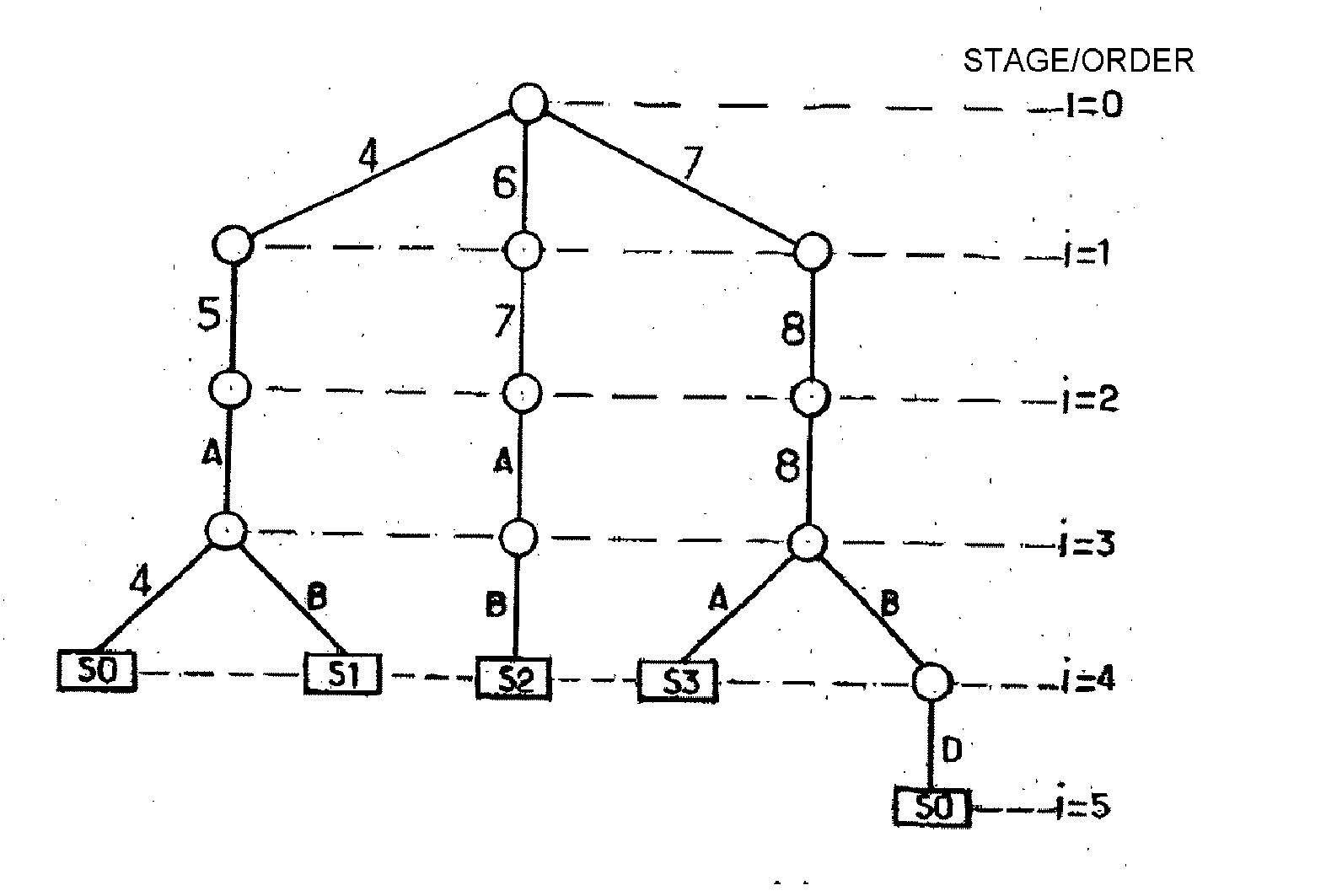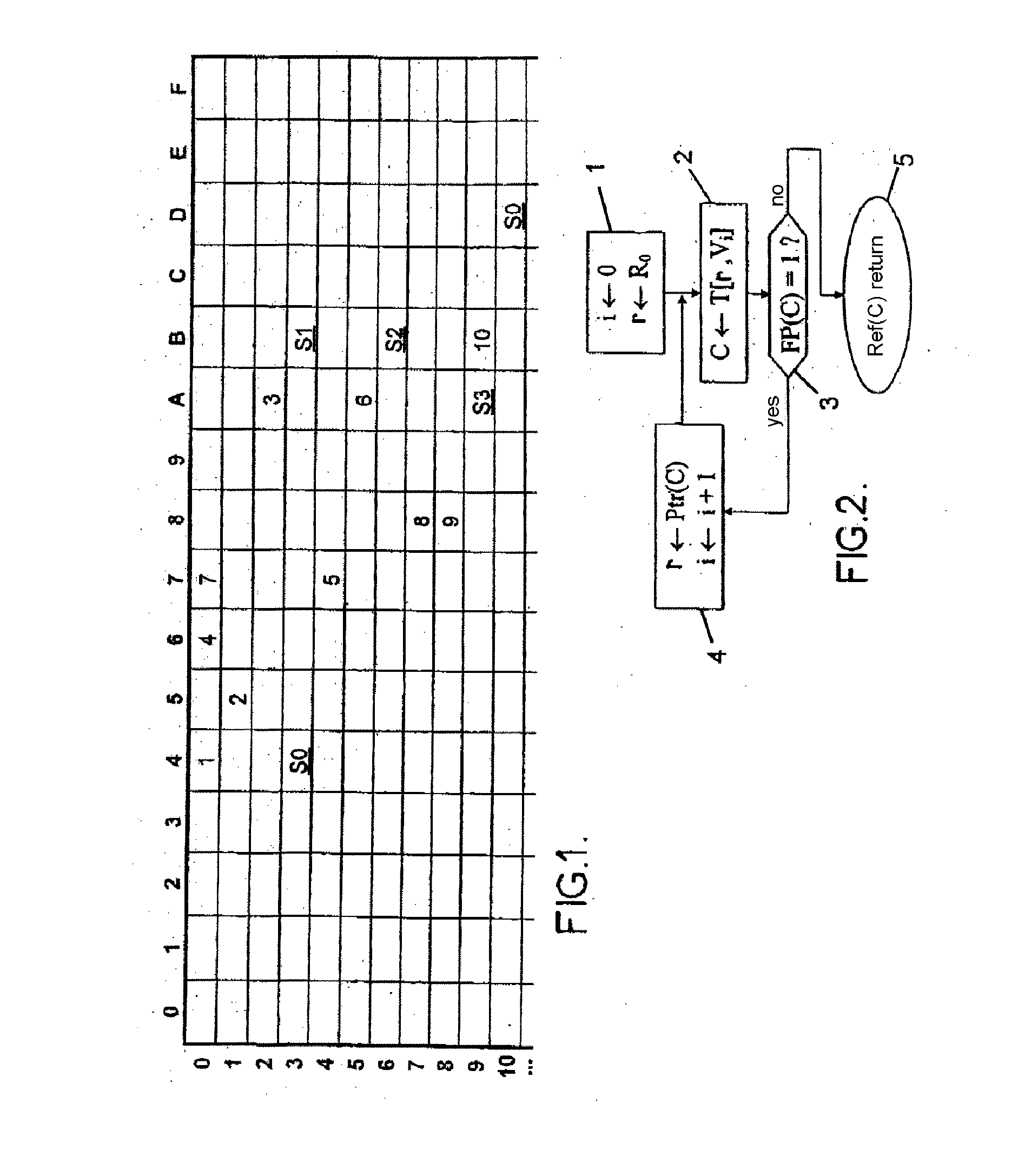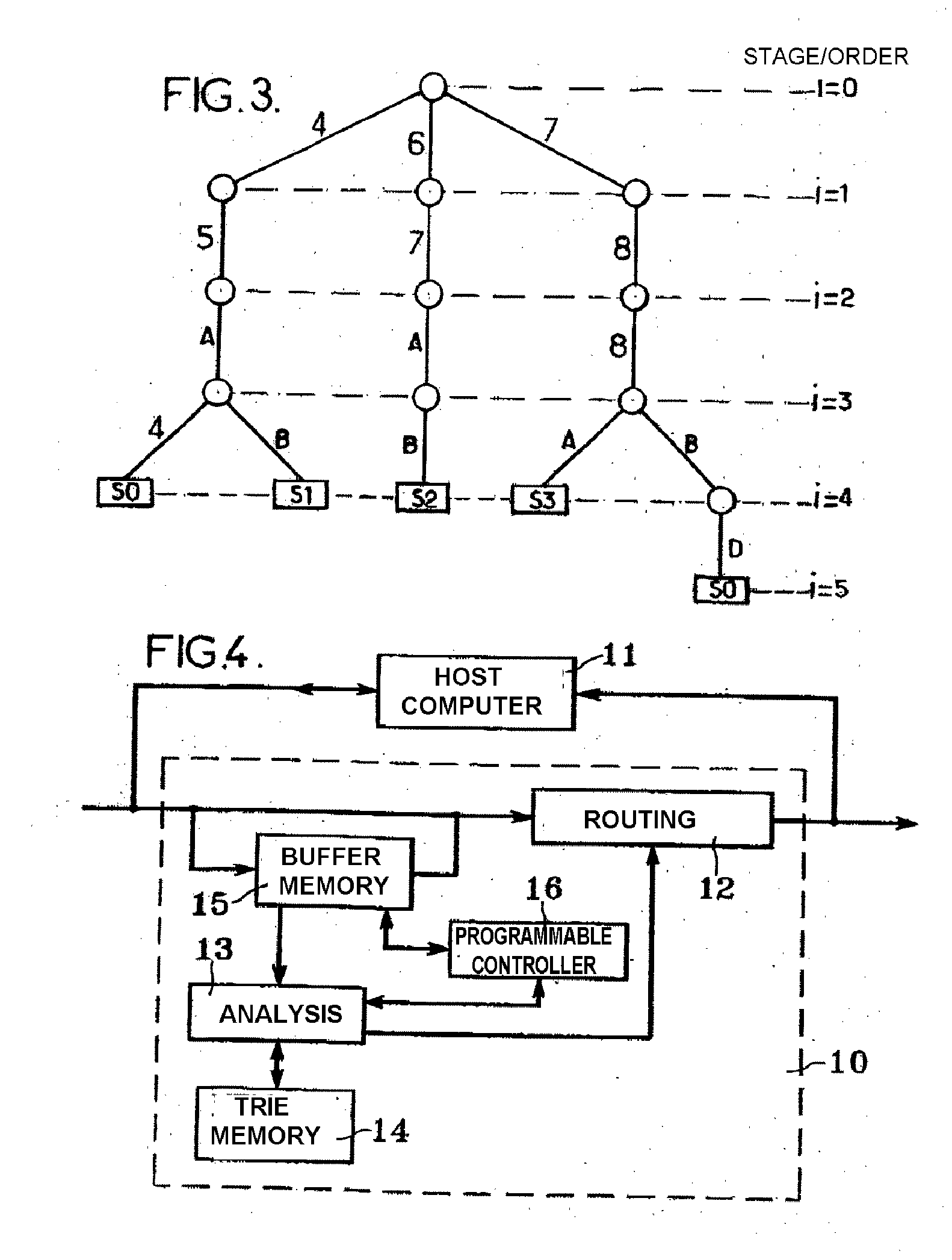Trie-Type Memory Device With a Compression Mechanism
- Summary
- Abstract
- Description
- Claims
- Application Information
AI Technical Summary
Benefits of technology
Problems solved by technology
Method used
Image
Examples
Embodiment Construction
[0049] To illustrate the following description, consideration is given to the case in which packets to be forwarded by a router are transported over an asynchronous transfer mode (ATM) network and it is assumed that the header of each packet is always contained in an ATM cell.
[0050] The router 10 shown in FIG. 4 operates with a host computer 11. The host computer 11 may transmit and receive packets, particularly for the management of the routing process. For this, it has a virtual channel (VC) at the input and output of the router 10.
[0051] The router 10 comprises a forwarding module 12 which forwards the received packets according to instructions, hereinafter called “forwarding references” or “final status”, obtained by an analysis module 13 from a memory 14 organized as a TRIE memory table. In the case of ATM network equipment, the forwarding module 12 may essentially translate the virtual path identifiers and virtual channel identifiers (VPI / VCI), merge the virtual channels acc...
PUM
 Login to View More
Login to View More Abstract
Description
Claims
Application Information
 Login to View More
Login to View More - R&D
- Intellectual Property
- Life Sciences
- Materials
- Tech Scout
- Unparalleled Data Quality
- Higher Quality Content
- 60% Fewer Hallucinations
Browse by: Latest US Patents, China's latest patents, Technical Efficacy Thesaurus, Application Domain, Technology Topic, Popular Technical Reports.
© 2025 PatSnap. All rights reserved.Legal|Privacy policy|Modern Slavery Act Transparency Statement|Sitemap|About US| Contact US: help@patsnap.com



